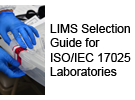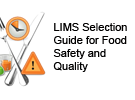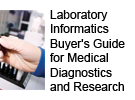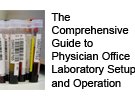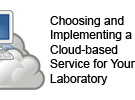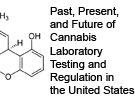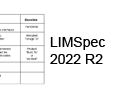Difference between revisions of "Health information technology"
Shawndouglas (talk | contribs) (Created stub record. Saving and modifying content to meet wiki standards later.) |
Shawndouglas (talk | contribs) m (→Types of technology: Internal link) |
||
| (6 intermediate revisions by the same user not shown) | |||
| Line 1: | Line 1: | ||
[[File:Cornerstone EPIC Photo (3).jpg|thumb|360px|right|Health information technology varies in implementation, from the hospital or physician's office to the home or patient bedside area.]] | |||
| | '''Health information technology (HIT)''' is the application of "hardware and software in an effort to manage and manipulate health data and information."<ref name="CiampaHIT">{{cite book |url=https://books.google.com/books?id=BdIZSlIXCcQC&printsec=frontcover |title=Introduction to Healthcare Information Technology |author=Ciampa, Mark; Revels, Mark |publisher=Cengage Learning |year=2013 |pages=320 |isbn=9781133787778 |accessdate=24 June 2015}}</ref> HIT acts as a framework for the comprehensive management of health information originating from consumers, providers, governments, and insurers in order to improve the overall state of health care. Among those improvements, the Congressional Budget Office (CBO) of the United States believes HIT can<ref name="CBOHIT08">{{cite web |url=https://www.cbo.gov/sites/default/files/05-20-healthit.pdf |format=PDF |title=Evidence on the Costs and Benefits of Health Information Technology |author=Hagen, Stuart; Richmond, Peter; Mazade, Leah (ed.) |publisher=Congressional Budget Office |pages=37 |date=20 May 2008 |accessdate=24 June 2015}}</ref>: | ||
| | |||
| | |||
| | |||
'''Health information technology | |||
* reduce or eliminate errors from medical transcription. | * reduce or eliminate errors from medical transcription. | ||
| Line 22: | Line 17: | ||
<blockquote>Estimating the impact of some potential sources of savings, especially those arising from greater exchange of information among providers, insurers, and patients, is especially difficult because health IT networks are in an early stage of development. Furthermore, health care providers and hospitals that were early adopters of health IT may have been motivated by particular characteristics of their organizations or operations that made them more likely than nonadopters to achieve benefits from health IT—in which case the outcomes they have seen might not be generalizable. Evidence of savings in the health care sector as a whole from adopting health IT is also limited.<ref name="CBOHIT08" /></blockquote> | <blockquote>Estimating the impact of some potential sources of savings, especially those arising from greater exchange of information among providers, insurers, and patients, is especially difficult because health IT networks are in an early stage of development. Furthermore, health care providers and hospitals that were early adopters of health IT may have been motivated by particular characteristics of their organizations or operations that made them more likely than nonadopters to achieve benefits from health IT—in which case the outcomes they have seen might not be generalizable. Evidence of savings in the health care sector as a whole from adopting health IT is also limited.<ref name="CBOHIT08" /></blockquote> | ||
Additional momentum towards furthering HIT implementation arrived in 2009 with the Obama Administration's passage of the American Recovery and Reinvestment Act and it's included Health Information Technology for Economic and Clinical Health Act (HITECH), which provided approximately $19 billion in incentives for the health care system to shift towards using health information technology. Approximately $2 billion was earmarked for programs developed by the National Coordinator and Secretary to help healthcare providers implement HIT and provide technical assistance through various regional centers. The other $17 billion in incentives came from Medicare and Medicaid funding for those who adopt HIT before 2015. A year later Obama's Patient Protection and Affordable Care Act (PPACA) was enacted, among other things linking quality care with payment through mandated quality reporting.<ref name="ACEPHIT" /> | Additional momentum towards furthering HIT implementation arrived in 2009 with the Obama Administration's passage of the American Recovery and Reinvestment Act and it's included [[Health Information Technology for Economic and Clinical Health Act]] (HITECH), which provided approximately $19 billion in incentives for the health care system to shift towards using health information technology. Approximately $2 billion was earmarked for programs developed by the National Coordinator and Secretary to help healthcare providers implement HIT and provide technical assistance through various regional centers. The other $17 billion in incentives came from Medicare and Medicaid funding for those who adopt HIT before 2015. A year later Obama's Patient Protection and Affordable Care Act (PPACA) was enacted, among other things linking quality care with payment through mandated quality reporting.<ref name="ACEPHIT" /> | ||
One approach to reducing the costs and promoting wider use is to develop open standards related to HIT. In July 2011, after being frustrated with unnecessarily complex and inflexible standards for information interchange standards related to HIT, the Fast Health Interoperable Resources (FHIR) project was started with the desire "to drive down the costs of exchanging data [and] to set the healthcare information free so that people can solve real world healthcare problems more easily and cheaply."<ref name="MunroFHIR">{{cite web |url=http://www.forbes.com/sites/danmunro/2014/03/30/setting-healthcare-interop-on-fire/ |title=Setting Healthcare Interop On Fire |author=Munro, Dan |work=Forbes |publisher=Forbes Media, LLC |date=30 March 2014 |accessdate=24 June 2015}}</ref> Supported by [[Health Level Seven]], the FHIR standard gained further support in 2014<ref name="MunroFHIR" /> | One approach to reducing the costs and promoting wider use is to develop open standards related to HIT. In July 2011, after being frustrated with unnecessarily complex and inflexible standards for information interchange standards related to HIT, the Fast Health Interoperable Resources (FHIR) project was started with the desire "to drive down the costs of exchanging data [and] to set the healthcare information free so that people can solve real world healthcare problems more easily and cheaply."<ref name="MunroFHIR">{{cite web |url=http://www.forbes.com/sites/danmunro/2014/03/30/setting-healthcare-interop-on-fire/ |title=Setting Healthcare Interop On Fire |author=Munro, Dan |work=Forbes |publisher=Forbes Media, LLC |date=30 March 2014 |accessdate=24 June 2015}}</ref> Supported by [[Health Level Seven]], the FHIR standard gained further support in 2014<ref name="MunroFHIR" /> and promised to improve on existing standards by making FHIR fast and easy to implement, free to use, and based on modern web standards.<ref name="FHIRAbout">{{cite web |url=http://www.hl7.org/fhir/DSTU1/summary.html |title=1.7 Introducing HL7 FHIR |publisher=Health Level Seven |date=30 September 2014 |accessdate=24 June 2015}}</ref> | ||
==Types of technology== | ==Types of technology== | ||
Numerous types of HIT are being used in hospitals, clinics, and physician offices around the world. Some types of HIT are used to dispense medications, including bar-coding at medication dispensing (BarD) and automated dispensing machines (ADM). Others are used for managing patient health data (EHR), ordering tests ([[computerized physician order entry]]; CPOE), and assisting with diagnoses ([[clinical decision support system]]; CDSS). Even consumer health IT applications that help patients track their own health statistics can be considered HIT.<ref name="FurukawaHIT">{{cite journal |url=http://content.healthaffairs.org/content/27/3/865.full |journal=Health Affairs |title=Adoption Of Health Information Technology For Medication Safety In U.S. Hospitals, 2006 |author=Furukawa, Michael F.; Raghu, T. S.; Spaulding, Trent J.; Vinze, Ajay |volume=27 |issue=3 |year=May 2008 |pages=865–75 |doi=10.1377/hlthaff.27.3.865 |accessdate=25 June 2015}}</ref><ref name="AHRQHIT">{{cite web |url=http://www.ahrq.gov/professionals/prevention-chronic-care/improve/health-it/ |title=Health Information Technology Integration |publisher=Agency for Healthcare Research and Quality |accessdate=25 June 2015}}</ref> | |||
===Electronic | ===Electronic health record (EHR)=== | ||
An electronic health record (EHR) is "a longitudinal collection of electronic health information" in digital format that is theoretically capable of being shared across different health care settings.<ref name="GunterTerryEHR">{{cite journal |url=http://www.ncbi.nlm.nih.gov/pmc/articles/PMC1550638/ |title=The Emergence of National Electronic Health Record Architectures in the United States and Australia: Models, Costs, and Questions |author=Gunter, T.D.; Terry, N.P. |journal=Journal of Medical Internet Research |year=Jan–Mar 2005 |volume=7 |issue=1 |doi=10.2196/jmir.7.1.e3 |accessdate=08 May 2013}}</ref> Advances in [[health informatics]] and widespread adoption of the EHR promise to provide authorized users access to a patient's records at any health care site. EHR's may also eventually help improve care coordination. Since anyone using an EHR can view the patient's full chart, it cuts down on guessing histories and seeing multiple specialists while smoothing transitions between care settings, and the EHR may allow better care in emergency situations.<ref name="HITCareCoord">{{cite web |url=http://www.healthit.gov/providers-professionals/improved-care-coordination |title=Improved Care Coordination |work=HealthIT.gov |publisher=U.S. Department of Health & Human Services |date=20 March 2014 |accessdate=25 June 2015}}</ref> EHRs may also improve prevention by providing doctors and patients better access to test results, identifying missing patient information, and offering evidence-based recommendations for preventive services.<ref name="AHRQInnovations">{{cite web |url=https://innovations.ahrq.gov/profiles/primary-care-patients-use-interactive-preventive-health-record-integrated-electronic-health |title=Primary Care Patients Use Interactive Preventive Health Record Integrated With Electronic Health Record, Leading to Enhanced Provision of Preventive Services |author=Krist, Alex H. |work=AHRQ Health Care Innovations Exchange |publisher=Agency for Healthcare Research and Quality |date=18 December 2013 |accessdate=25 June 2015}}</ref> | |||
Yet while electronic health records have potentially many advantages in terms of providing efficient and safe care, recent reports have brought to light some challenges with implementing an EHR. The most immediate barriers for widespread adoption of this technology have been the high initial cost of implementing the new technology and the time required for doctors to train and adapt to the new system. There have also been suspected cases of fraudulent billing, where hospitals inflate their billings to Medicare.<ref name="FreudenheimEMR">{{cite web |url=http://www.nytimes.com/2012/10/09/health/the-ups-and-downs-of-electronic-medical-records-the-digital-doctor.html?pagewanted=all&_r=0 |title=The Ups and Downs of Electronic Medical Records |author=Freudenheim, Milt |work=New York Times |publisher=The New York Times Company |date=08 October 2012 |accessdate=25 June 2015}}</ref> | |||
==== | Major roadblocks to wider EHR adoption are most noticed by physicians, who have a vested interest in medical outcomes. A 2013 study of emergency physicians with access to HIT, for example, found the technology disrupted workflow and was not user-friendly, despite the main goal of HIT being to improve coordination of care.<ref name="ThornHIE">{{cite journal |url=http://www.annemergmed.com/article/S0196-0644%2813%2901449-2/abstract |journal=Annals of Emergency Medicine |title=Emergency Physicians' Perspectives on Their Use of Health Information Exchange |author=Thorn, Shirley A.; Carter, Michael A.; Bailey, James E. |volume=63 |issue=3 |year=March 2014 |pages=329–37 |doi=10.1016/j.annemergmed.2013.09.024 |accessdate=25 June 2015}}</ref> The same problems and protests were evident six years earlier, specifically in regard to physician resistance to using EMRs and CPOE.<ref name="BhattacharjeeHIT">{{cite journal |url=http://www.computer.org/csdl/proceedings/hicss/2007/2755/00/27550141b.pdf |format=PDF |journal=40th Annual Hawaii International Conference on System Sciences, 2007 |author=Bhattacherjee, Anol; Hikmet, Neset |year=2007 |doi=10.1109/HICSS.2007.437 |accessdate=25 June 2015}}</ref> Other research has found some providers — especially those operating small private practices — don't monetarily realize the efficiency-increasing benefits of adopting HIT like EHRs in their facility.<ref name="CBOHIT08" /> | ||
Patient-wise, the state of health information privacy (HIP) and sharing from EHRs has been a notable concern. For example, researchers in Canada announced in 2011 that of more than 500 patients interviewed, nearly 30 percent disagreed with the idea of having their de-identified personal history shared outside the immediate health care circle, and only 38 percent "supported the notion that computerized records can be [kept] more private than paper records."<ref name="PereraHIT">{{cite journal |url=http://www.ijmijournal.com/article/S1386-5056%2810%2900225-X/abstract |journal=International Journal of Medical Informatics |title=Views on health information sharing and privacy from primary care practices using electronic medical records |author=Perera, Gihan; Holbrook, Anne; Thabane, Lehana; Foster, Gary; Willison, Donald J. |year=February 2011 |volume=80 |issue=2 |pages=94–101 |doi=10.1016/j.ijmedinf.2010.11.005 |pmid=21167771 |accessdate=25 June 2015}}</ref> | |||
=== | ===Computerized provider order entry (CPOE)=== | ||
Prescribing errors are the largest identified source of preventable errors in hospitals. A 2006 report by the Institute of Medicine estimated that a hospitalized patient is exposed to a medication error each day of his or her stay.<ref name="iom06">{{cite book |url=http://www.nap.edu/catalog/11623/preventing-medication-errors-quality-chasm-series |title=Preventing Medication Errors |author=Aspden, Philip; Wolcott, Julie; Bootman, J. Lyle; Cronenwett, Linda R. |publisher=The National Academies Press |pages=480 |year=2007 |isbn=9780309101479 |accessdate=25 June 2015}}</ref> Computerized provider order entry (CPOE) can reduce total medication error rates (often caused by miscommunication among all parties involved in a health care scenario)<ref name="CBOHIT08" />, with some early studies indicating reduction by as much as 80 percent and adverse (serious with harm to patient) error reduction by 55 percent.<ref name="Bates-et_al-1998">{{cite journal |url=http://jama.jamanetwork.com/article.aspx?articleid=188074 |journal=JAMA |title=Effect of Computerized Physician Order Entry and a Team Intervention on Prevention of Serious Medication Errors |author=Bates, David W. et al. |volume=280 |issue=15 |year=October 1998 |pages=1311–1316 |doi=10.1001/jama.280.15.1311 |accessdate=25 June 2015}}</ref> Additionally, a standardized bar code system for dispensing drugs could prevent additional drug errors.<ref name=iom06 /> CPOE can also manage admission, referral, laboratory testing, and procedure ordering tasks while improving quality of care and workflows while reducing medical costs.<ref name="DixonCPOE">{{cite web |url=http://healthit.ahrq.gov/ahrq-funded-projects/emerging-lessons/computerized-provider-order-entry-inpatient/inpatient-computerized-provider-order-entry-cpoe |title=Inpatient Computerized Provider Order Entry (CPOE) |author=Dixon, Brian E. |work=Health Information Technology |publisher=Agency for Healthcare Research and Quality |date=January 2009 |accessdate=25 June 2015}}</ref> | |||
Like EHRs, problems with usability and disrupted workflows have been cited as reasons for resistance to adopting CPOE.<ref name="BhattacharjeeHIT" /> Owners of small physician practices utilizing CPOE require a major change in practice work flow and an additional investment of time. Many physicians are not full-time hospital staff; entering orders for their hospitalized patients means taking time away from scheduled patients.<ref name="LittonCPOE">{{cite web |url=http://www.physicianspractice.com/blog/computerized-physician-order-entry-coming-hospital-near-you |title=Computerized Physician Order Entry: Coming to a Hospital Near You |author=Litton, J. Scott |work=Physicians Practice |publisher=UBM Medica, LLC |date=30 March 2012 |accessdate=25 June 2015}}</ref> Additionally, physicians have been concerned that CPOE would cause them to lose control over their own work procedures (ordering patient tests, reviewing lab results, etc.)<ref name="BhattacharjeeHIT" /> | |||
==Regulation and oversight== | ==Regulation and oversight== | ||
An executive order from President Bush in April 2004 created a new National Health Information Coordinator position in charge of the Office of the National Health Information Infrastructure, which would fall under the direction of the [[U.S. Department of Health and Human Services|Department of Health and Human Services]] (HHS).<ref name="BushHITNews" /><ref name="ACEPHIT" /> The Obama Administration's passage of the American Recovery and Reinvestment Act and it's included Health Information Technology for Economic and Clinical Health Act (HITECH) in 2009 cemented that office — now called the Office of the National Coordinator for Health Information Technology (ONC) — and HHS's role in promoting a nationwide health IT infrastructure.<ref name="ONCArch">{{cite web |url=http://www.healthit.hhs.gov/portal/server.pt?open=512&objID=1200&parentname=CommunityPage&parentid=711&mode=2&in_hi_userid=10741&cached=true |archiveurl=https://web.archive.org/web/20100529033610/http://www.healthit.hhs.gov/portal/server.pt?open=512&objID=1200&parentname=CommunityPage&parentid=711&mode=2&in_hi_userid=10741&cached=true |title=The Office of the National Coordinator for Health Information Technology (ONC) |publisher=U.S. Department of Health & Human Services |date=13 May 2010 |archivedate=29 May 2010 |accessdate=29 June 2015}}</ref> However, other federal agencies and advisory committees have also been involved with the Federal Health IT Strategic Plan, including the Agency for Healthcare Research and Quality (AHRQ), [[Centers for Medicare and Medicaid Services]] (CMS), the [[National Institutes of Health]] (NIH), and the American Health Information Community (AHIC).<ref name="HITProgsArch">{{cite web |url=http://healthit.hhs.gov/portal/server.pt?open=512&objID=1141&parentname=CommunityPage&parentid=77&mode=2&in_hi_userid=10741&cached=true |archiveurl=https://web.archive.org/web/20090511090335/http://healthit.hhs.gov/portal/server.pt?open=512&objID=1141&parentname=CommunityPage&parentid=77&mode=2&in_hi_userid=10741&cached=true |title=Federal Health IT Programs |publisher=U.S. Department of Health & Human Services |archivedate=11 May 2009 |accessdate=29 June 2015}}</ref> However, the ONC remains the primary entity responsible for regulating and promoting health IT in the U.S. | |||
The HITECH Act is the primary legislation affecting HIT regulation and oversight. It created the Health IT Policy and Standards Committees to affect policy decisions and create standards and specifications affecting HIT; it amended the Public Health Service Act to "improve evaluation, adoption, and implementation" of those policies, standards, and specifications; required better health IT quality reporting; improved privacy and security provisions; and created incentive programs for HIT adoption.<ref name="HITECHONC">{{cite web |url=http://healthit.gov/policy-researchers-implementers/select-portions-hitech-act-and-relationship-onc-work |title=Select Portions of the HITECH Act and Relationship to ONC Work |work=HealthIT.gov |publisher=U.S. Department of Health & Human Services |date=27 March 2015 |accessdate=29 June 2015}}</ref> The [[Health Insurance Portability and Accountability Act]] (HIPAA) and the Affordable Care Act have also played important roles in HIT regulation.<ref name="HITLeg">{{cite web |url=http://healthit.gov/policy-researchers-implementers/health-it-legislation |title=Health IT Legislation |work=HealthIT.gov |publisher=U.S. Department of Health & Human Services |date=27 March 2015 |accessdate=29 June 2015}}</ref> | |||
Another important piece of legislation affecting HIT arrived on September 4, 2013, when the Health IT Policy Committee (HITPC) accepted and approved recommendations from the Food and Drug Administration Safety and Innovation Act (FDASIA) working group for a risk-based regulatory framework for health information technology.<ref name="DanielHIT">{{cite web |url=http://www.healthit.gov/buzz-blog/hit-policy-committee/path-riskbased-regulatory-framework-health/ |title=The path toward a risk-based regulatory framework for health IT |author=Daniel, Jodi G.; Patel, Baku P.; Quinn, Matthew |work=Health IT Buzz |publisher=Office of the National Coordinator for Health IT |date=05 September 2013 |accessdate=29 June 2015}}</ref> The Food and Drug Administration (FDA), the Federal Communications Commission (FCC), and the ONC kicked off the FDASIA workgroup of the HITPC to provide stakeholder input into a report on a risk-based regulatory framework that promotes safety and innovation and reduces regulatory duplication, consistent with section 618 of FDASIA. This provision permitted the Secretary of Health and Human Services (HHS) to form a workgroup in order to obtain broad stakeholder input from across many spectrum and participate in the related discussions. | |||
==Technological barriers== | |||
The introduction of technology into existing processes may introduce new sources of error.<ref name="KoppelCPOE">{{cite journal |url=http://jama.ama-assn.org/cgi/content/abstract/293/10/1197 |journal=JAMA |title=Role of Computerized Physician Order Entry Systems in Facilitating Medication Errors |author=Koppel, Ross et al. |volume=293 |issue=10 |pages=1197–1203 |doi=10.1001/jama.293.10.1197 |pmid=15755942 |accessdate=29 June 2015}}</ref><ref name="LohrErrors">{{cite web |url=http://www.nytimes.com/2005/03/09/technology/doctors-journal-says-computing-is-no-panacea.html |title=Doctors' Journal Says Computing Is No Panacea |author=Lohr, Steve |work=The New York Times |publisher=The New York Times Company |date=09 March 2005 |accessdate=29 June 2015}}</ref> Technologically induced errors are significant and increasingly more evident in care delivery systems. Terms to describe this new area of error production include the label technological iatrogenesis for the process<ref name="PalmieriIat">{{cite journal |url=http://www.hom.ba.ttu.edu/FordPub/Palmieri_JHCRM_2008_Technological%20iatrogenesis.pdf |archiveurl=https://web.archive.org/web/20120212001907/http://www.hom.ba.ttu.edu/FordPub/Palmieri_JHCRM_2008_Technological%20iatrogenesis.pdf |format=PDF |journal=Journal of Healthcare Risk Management |title=Technological iatrogenesis: New risks force heightened management awareness |author=Palmieri, Patrick; Peterson, Lori T.; Ford, Eric W. |volume=27 |issue=4 | pages=19–24 |year=2007 |doi=10.1002/jhrm.5600270405 |pmid=20200891 |archivedate=12 February 2012 |accessdate=29 June 2015}}</ref> and e-iatrogenic for the individual error.<ref name="PalmieriIat">{{cite journal |url=http://www.jamia.org/cgi/reprint/14/3/387.pdf |archiveurl=https://web.archive.org/web/20081217113728/http://www.jamia.org/cgi/reprint/14/3/387.pdf |format=PDF |journal=Journal of American Medical Informatics Association |title=“e-Iatrogenesis”: The Most Critical Unintended Consequence of CPOE and other HIT |author=Weiner, Jonathan P.; Kfuri, Toni; Chan, Kitty; Fowles, Jinnet B. |volume=14 |issue=3 | pages=387–388 |year=May/June 2007 |doi=10.1197/jamia.M2338 |pmid=17329719 |archivedate=17 December 2008 |accessdate=29 June 2015}}</ref> Problems include<ref name="ThornHIE" /><ref name="BhattacharjeeHIT" />: | |||
* Prescriber and staff inexperience may lead to a false sense of security that when technology suggests a course of action, errors are avoided. | |||
* Shortcut or default selections can override non-standard medication regimens for elderly or underweight patients, resulting in toxic doses. | |||
* Irrelevant or frequent warnings can interrupt work flow. | |||
Healthcare information technology can also result in iatrogenesis if design and engineering are substandard, as illustrated in a 14-part detailed analysis done at the University of Sydney.<ref name="HITRLStudy">{{cite web |url=http://sydney.edu.au/engineering/it/~hitru/index.php?option=com_content&task=view&id=91&Itemid=146 |title=A Study of An Enterprise Health Information System |author=Patrick, J. |work=Health Information Technologies Research Laboratory |publisher=University of Sydney |pages=190 |date=04 March 2011 |accessdate=29 June 2015}}</ref> | |||
==See also== | ==See also== | ||
<!-- Please keep entries in alphabetical order --> | |||
{{div col|2}} | {{div col|2}} | ||
* [[Bioinformatics]] | * [[Bioinformatics]] | ||
* [[Consumer health informatics]] | * [[Consumer health informatics]] | ||
* [[Electronic health record]] | |||
* [[Electronic health record]] | |||
* [[Health informatics]] | * [[Health informatics]] | ||
* [[Health information management]] | * [[Health information management]] | ||
* [[Hospital information system]] | * [[Hospital information system]] | ||
* [[Imaging informatics]] | * [[Imaging informatics]] | ||
* [[List of open source healthcare software]] | * [[:Category:Health informatics software (open source)|List of open-source healthcare software]] | ||
* [[Medical imaging]] | * [[Medical imaging]] | ||
* [[Picture archiving and communication system]] | * [[Picture archiving and communication system]] | ||
* [[Public health informatics]] | * [[Public health informatics]] | ||
* [[Radiology | * [[Radiology information system]] | ||
{{div col end}} | {{div col end}} | ||
== | ==Notes== | ||
This article reuses several elements from [http://en.wikipedia.org/wiki/Health_information_technology the Wikipedia article]. | |||
==Further reading== | ==Further reading== | ||
* | * {{cite web |url=http://professional.education.uiowa.edu/bjpatter/service/PS%20Pub%20HIT.pdf |format=PDF |title=Health Information Technology: Background Paper for the 2008–09 APhA Policy Committee |author=American Pharmacists Association |year=2008}} | ||
* {{cite book |url=https://books.google.com/books?id=BdIZSlIXCcQC&printsec=frontcover |title=Introduction to Healthcare Information Technology |author=Ciampa, Mark; Revels, Mark |publisher=Cengage Learning |year=2013 |pages=320 |isbn=9781133787778}} | |||
==External links== | ==External links== | ||
* [http://www.ahrq.gov/index.html AHRQ.gov] | |||
* [http://www. | * [http://www.hl7.org/fhir/DSTU1/summary.html FHIR at Health Level Seven] | ||
* [http://healthit.gov/ HealthIT.gov] | |||
*[http://www. | |||
* [http:// | |||
==References== | |||
<references /> | |||
<!---Place all category tags here--> | |||
[[Category: | [[Category:Healthcare terms]] | ||
Revision as of 22:27, 8 December 2015
Health information technology (HIT) is the application of "hardware and software in an effort to manage and manipulate health data and information."[1] HIT acts as a framework for the comprehensive management of health information originating from consumers, providers, governments, and insurers in order to improve the overall state of health care. Among those improvements, the Congressional Budget Office (CBO) of the United States believes HIT can[2]:
- reduce or eliminate errors from medical transcription.
- reduce the number of diagnostic tests that get duplicated.
- improve patient outcomes and service efficiency.
- encourage rigorous scientific comparisons of treatment efficacy and cost to make treatment cheaper and more effective.
- improve the portability of personal/protected health information (PHI).
The "technology" of "health information technology" represents computers, software, and communications infrastructure that can be networked to create systems for manipulating health information. As such, the science of informatics and its focus on information processing and systems engineering is also integral to the development, application, and evaluation of HIT. In particular the subdivision of health informatics, which focuses on the resources, devices, and methods required for optimizing the acquisition, storage, retrieval, and use of information in health and biomedicine, is most relevant. However, other subdivisions of informatics such as medical informatics, public health informatics, pharmacoinformatics, and translational research informatics are able to inform health informatics from different disciplinary perspectives.[3][4]
U.S. implementation of HIT
In a 2001 report titled Crossing the Quality Chasm: A New Health System for the 21st Century, the Institute of Medicine called for changes to the U.S. healthcare system, declaring a need for "an environment in which public policy and market forces are aligned and in which the change process is supported by an appropriate information technology infrastructure."[5] This report arguably set the tone for further pushes to develop health information technologies and support their adoption.
This eventually led to an announcement by President Bush in April 2004 that a new 10-year initiative was being developed to encourage greater electronic health record adoption, increase funding to health information technology initiatives, and create a new National Health Information Coordinator position. That initiative was furthered by two executive orders signed into law, requiring the Department of Health and Human Services (HHS) to take the lead in advancing the cause.[6][7] Shortly after, several studies from RAND Corporation and the Center for Information Technology Leadership optimistically stated the impact of widespread HIT adoption would potentially lead to nearly $80 billion U.S. annually in the health care sector. However, in 2008 the Congressional Budget Office (CBO) found limitations in those studies — which looked at potential impact rather than likely impact — and found the annual savings numbers to be significantly overstated.[2] The CBO elaborated:
Estimating the impact of some potential sources of savings, especially those arising from greater exchange of information among providers, insurers, and patients, is especially difficult because health IT networks are in an early stage of development. Furthermore, health care providers and hospitals that were early adopters of health IT may have been motivated by particular characteristics of their organizations or operations that made them more likely than nonadopters to achieve benefits from health IT—in which case the outcomes they have seen might not be generalizable. Evidence of savings in the health care sector as a whole from adopting health IT is also limited.[2]
Additional momentum towards furthering HIT implementation arrived in 2009 with the Obama Administration's passage of the American Recovery and Reinvestment Act and it's included Health Information Technology for Economic and Clinical Health Act (HITECH), which provided approximately $19 billion in incentives for the health care system to shift towards using health information technology. Approximately $2 billion was earmarked for programs developed by the National Coordinator and Secretary to help healthcare providers implement HIT and provide technical assistance through various regional centers. The other $17 billion in incentives came from Medicare and Medicaid funding for those who adopt HIT before 2015. A year later Obama's Patient Protection and Affordable Care Act (PPACA) was enacted, among other things linking quality care with payment through mandated quality reporting.[7]
One approach to reducing the costs and promoting wider use is to develop open standards related to HIT. In July 2011, after being frustrated with unnecessarily complex and inflexible standards for information interchange standards related to HIT, the Fast Health Interoperable Resources (FHIR) project was started with the desire "to drive down the costs of exchanging data [and] to set the healthcare information free so that people can solve real world healthcare problems more easily and cheaply."[8] Supported by Health Level Seven, the FHIR standard gained further support in 2014[8] and promised to improve on existing standards by making FHIR fast and easy to implement, free to use, and based on modern web standards.[9]
Types of technology
Numerous types of HIT are being used in hospitals, clinics, and physician offices around the world. Some types of HIT are used to dispense medications, including bar-coding at medication dispensing (BarD) and automated dispensing machines (ADM). Others are used for managing patient health data (EHR), ordering tests (computerized physician order entry; CPOE), and assisting with diagnoses (clinical decision support system; CDSS). Even consumer health IT applications that help patients track their own health statistics can be considered HIT.[10][11]
Electronic health record (EHR)
An electronic health record (EHR) is "a longitudinal collection of electronic health information" in digital format that is theoretically capable of being shared across different health care settings.[12] Advances in health informatics and widespread adoption of the EHR promise to provide authorized users access to a patient's records at any health care site. EHR's may also eventually help improve care coordination. Since anyone using an EHR can view the patient's full chart, it cuts down on guessing histories and seeing multiple specialists while smoothing transitions between care settings, and the EHR may allow better care in emergency situations.[13] EHRs may also improve prevention by providing doctors and patients better access to test results, identifying missing patient information, and offering evidence-based recommendations for preventive services.[14]
Yet while electronic health records have potentially many advantages in terms of providing efficient and safe care, recent reports have brought to light some challenges with implementing an EHR. The most immediate barriers for widespread adoption of this technology have been the high initial cost of implementing the new technology and the time required for doctors to train and adapt to the new system. There have also been suspected cases of fraudulent billing, where hospitals inflate their billings to Medicare.[15]
Major roadblocks to wider EHR adoption are most noticed by physicians, who have a vested interest in medical outcomes. A 2013 study of emergency physicians with access to HIT, for example, found the technology disrupted workflow and was not user-friendly, despite the main goal of HIT being to improve coordination of care.[16] The same problems and protests were evident six years earlier, specifically in regard to physician resistance to using EMRs and CPOE.[17] Other research has found some providers — especially those operating small private practices — don't monetarily realize the efficiency-increasing benefits of adopting HIT like EHRs in their facility.[2]
Patient-wise, the state of health information privacy (HIP) and sharing from EHRs has been a notable concern. For example, researchers in Canada announced in 2011 that of more than 500 patients interviewed, nearly 30 percent disagreed with the idea of having their de-identified personal history shared outside the immediate health care circle, and only 38 percent "supported the notion that computerized records can be [kept] more private than paper records."[18]
Computerized provider order entry (CPOE)
Prescribing errors are the largest identified source of preventable errors in hospitals. A 2006 report by the Institute of Medicine estimated that a hospitalized patient is exposed to a medication error each day of his or her stay.[19] Computerized provider order entry (CPOE) can reduce total medication error rates (often caused by miscommunication among all parties involved in a health care scenario)[2], with some early studies indicating reduction by as much as 80 percent and adverse (serious with harm to patient) error reduction by 55 percent.[20] Additionally, a standardized bar code system for dispensing drugs could prevent additional drug errors.[19] CPOE can also manage admission, referral, laboratory testing, and procedure ordering tasks while improving quality of care and workflows while reducing medical costs.[21]
Like EHRs, problems with usability and disrupted workflows have been cited as reasons for resistance to adopting CPOE.[17] Owners of small physician practices utilizing CPOE require a major change in practice work flow and an additional investment of time. Many physicians are not full-time hospital staff; entering orders for their hospitalized patients means taking time away from scheduled patients.[22] Additionally, physicians have been concerned that CPOE would cause them to lose control over their own work procedures (ordering patient tests, reviewing lab results, etc.)[17]
Regulation and oversight
An executive order from President Bush in April 2004 created a new National Health Information Coordinator position in charge of the Office of the National Health Information Infrastructure, which would fall under the direction of the Department of Health and Human Services (HHS).[6][7] The Obama Administration's passage of the American Recovery and Reinvestment Act and it's included Health Information Technology for Economic and Clinical Health Act (HITECH) in 2009 cemented that office — now called the Office of the National Coordinator for Health Information Technology (ONC) — and HHS's role in promoting a nationwide health IT infrastructure.[23] However, other federal agencies and advisory committees have also been involved with the Federal Health IT Strategic Plan, including the Agency for Healthcare Research and Quality (AHRQ), Centers for Medicare and Medicaid Services (CMS), the National Institutes of Health (NIH), and the American Health Information Community (AHIC).[24] However, the ONC remains the primary entity responsible for regulating and promoting health IT in the U.S.
The HITECH Act is the primary legislation affecting HIT regulation and oversight. It created the Health IT Policy and Standards Committees to affect policy decisions and create standards and specifications affecting HIT; it amended the Public Health Service Act to "improve evaluation, adoption, and implementation" of those policies, standards, and specifications; required better health IT quality reporting; improved privacy and security provisions; and created incentive programs for HIT adoption.[25] The Health Insurance Portability and Accountability Act (HIPAA) and the Affordable Care Act have also played important roles in HIT regulation.[26]
Another important piece of legislation affecting HIT arrived on September 4, 2013, when the Health IT Policy Committee (HITPC) accepted and approved recommendations from the Food and Drug Administration Safety and Innovation Act (FDASIA) working group for a risk-based regulatory framework for health information technology.[27] The Food and Drug Administration (FDA), the Federal Communications Commission (FCC), and the ONC kicked off the FDASIA workgroup of the HITPC to provide stakeholder input into a report on a risk-based regulatory framework that promotes safety and innovation and reduces regulatory duplication, consistent with section 618 of FDASIA. This provision permitted the Secretary of Health and Human Services (HHS) to form a workgroup in order to obtain broad stakeholder input from across many spectrum and participate in the related discussions.
Technological barriers
The introduction of technology into existing processes may introduce new sources of error.[28][29] Technologically induced errors are significant and increasingly more evident in care delivery systems. Terms to describe this new area of error production include the label technological iatrogenesis for the process[30] and e-iatrogenic for the individual error.[30] Problems include[16][17]:
- Prescriber and staff inexperience may lead to a false sense of security that when technology suggests a course of action, errors are avoided.
- Shortcut or default selections can override non-standard medication regimens for elderly or underweight patients, resulting in toxic doses.
- Irrelevant or frequent warnings can interrupt work flow.
Healthcare information technology can also result in iatrogenesis if design and engineering are substandard, as illustrated in a 14-part detailed analysis done at the University of Sydney.[31]
See also
- Bioinformatics
- Consumer health informatics
- Electronic health record
- Health informatics
- Health information management
- Hospital information system
- Imaging informatics
- List of open-source healthcare software
- Medical imaging
- Picture archiving and communication system
- Public health informatics
- Radiology information system
Notes
This article reuses several elements from the Wikipedia article.
Further reading
- American Pharmacists Association (2008). "Health Information Technology: Background Paper for the 2008–09 APhA Policy Committee" (PDF). http://professional.education.uiowa.edu/bjpatter/service/PS%20Pub%20HIT.pdf.
- Ciampa, Mark; Revels, Mark (2013). Introduction to Healthcare Information Technology. Cengage Learning. pp. 320. ISBN 9781133787778. https://books.google.com/books?id=BdIZSlIXCcQC&printsec=frontcover.
External links
References
- ↑ Ciampa, Mark; Revels, Mark (2013). Introduction to Healthcare Information Technology. Cengage Learning. pp. 320. ISBN 9781133787778. https://books.google.com/books?id=BdIZSlIXCcQC&printsec=frontcover. Retrieved 24 June 2015.
- ↑ 2.0 2.1 2.2 2.3 2.4 Hagen, Stuart; Richmond, Peter; Mazade, Leah (ed.) (20 May 2008). "Evidence on the Costs and Benefits of Health Information Technology" (PDF). Congressional Budget Office. pp. 37. https://www.cbo.gov/sites/default/files/05-20-healthit.pdf. Retrieved 24 June 2015.
- ↑ "When Healthcare and Computer Science Collide". University of Illinois at Chicago. http://healthinformatics.uic.edu/resources/infographics/when-healthcare-and-computer-science-collide/. Retrieved 25 June 2015.
- ↑ Hersh, William (May 2009). "A stimulus to define informatics and health information technology". BMC Medical Informatics & Decision Making 9 (24). doi:10.1186/1472-6947-9-24. http://www.biomedcentral.com/1472-6947/9/24. Retrieved 24 June 2015.
- ↑ Committee on Quality of Health Care in America (2001). Crossing the Quality Chasm: A New Health System for the 21st Century. National Academy Press. pp. 337. ISBN 0309072808. http://books.nap.edu/openbook.php?record_id=10027. Retrieved 24 June 2015.
- ↑ 6.0 6.1 "President Bush continues EHR push, sets national goals". Healthcare IT News. HIMSS Media. 26 April 2004. http://www.healthcareitnews.com/news/president-bush-continues-ehr-push-sets-national-goals. Retrieved 24 June 2015.
- ↑ 7.0 7.1 7.2 "Health Information Technology". American College of Emergency Physicians. 2014. http://www.acep.org/Advocacy/Health-Information-Technology/. Retrieved 24 June 2015.
- ↑ 8.0 8.1 Munro, Dan (30 March 2014). "Setting Healthcare Interop On Fire". Forbes. Forbes Media, LLC. http://www.forbes.com/sites/danmunro/2014/03/30/setting-healthcare-interop-on-fire/. Retrieved 24 June 2015.
- ↑ "1.7 Introducing HL7 FHIR". Health Level Seven. 30 September 2014. http://www.hl7.org/fhir/DSTU1/summary.html. Retrieved 24 June 2015.
- ↑ Furukawa, Michael F.; Raghu, T. S.; Spaulding, Trent J.; Vinze, Ajay (May 2008). "Adoption Of Health Information Technology For Medication Safety In U.S. Hospitals, 2006". Health Affairs 27 (3): 865–75. doi:10.1377/hlthaff.27.3.865. http://content.healthaffairs.org/content/27/3/865.full. Retrieved 25 June 2015.
- ↑ "Health Information Technology Integration". Agency for Healthcare Research and Quality. http://www.ahrq.gov/professionals/prevention-chronic-care/improve/health-it/. Retrieved 25 June 2015.
- ↑ Gunter, T.D.; Terry, N.P. (Jan–Mar 2005). "The Emergence of National Electronic Health Record Architectures in the United States and Australia: Models, Costs, and Questions". Journal of Medical Internet Research 7 (1). doi:10.2196/jmir.7.1.e3. http://www.ncbi.nlm.nih.gov/pmc/articles/PMC1550638/. Retrieved 08 May 2013.
- ↑ "Improved Care Coordination". HealthIT.gov. U.S. Department of Health & Human Services. 20 March 2014. http://www.healthit.gov/providers-professionals/improved-care-coordination. Retrieved 25 June 2015.
- ↑ Krist, Alex H. (18 December 2013). "Primary Care Patients Use Interactive Preventive Health Record Integrated With Electronic Health Record, Leading to Enhanced Provision of Preventive Services". AHRQ Health Care Innovations Exchange. Agency for Healthcare Research and Quality. https://innovations.ahrq.gov/profiles/primary-care-patients-use-interactive-preventive-health-record-integrated-electronic-health. Retrieved 25 June 2015.
- ↑ Freudenheim, Milt (8 October 2012). "The Ups and Downs of Electronic Medical Records". New York Times. The New York Times Company. http://www.nytimes.com/2012/10/09/health/the-ups-and-downs-of-electronic-medical-records-the-digital-doctor.html?pagewanted=all&_r=0. Retrieved 25 June 2015.
- ↑ 16.0 16.1 Thorn, Shirley A.; Carter, Michael A.; Bailey, James E. (March 2014). "Emergency Physicians' Perspectives on Their Use of Health Information Exchange". Annals of Emergency Medicine 63 (3): 329–37. doi:10.1016/j.annemergmed.2013.09.024. http://www.annemergmed.com/article/S0196-0644%2813%2901449-2/abstract. Retrieved 25 June 2015.
- ↑ 17.0 17.1 17.2 17.3 Bhattacherjee, Anol; Hikmet, Neset (2007). (PDF)40th Annual Hawaii International Conference on System Sciences, 2007. doi:10.1109/HICSS.2007.437. http://www.computer.org/csdl/proceedings/hicss/2007/2755/00/27550141b.pdf. Retrieved 25 June 2015.
- ↑ Perera, Gihan; Holbrook, Anne; Thabane, Lehana; Foster, Gary; Willison, Donald J. (February 2011). "Views on health information sharing and privacy from primary care practices using electronic medical records". International Journal of Medical Informatics 80 (2): 94–101. doi:10.1016/j.ijmedinf.2010.11.005. PMID 21167771. http://www.ijmijournal.com/article/S1386-5056%2810%2900225-X/abstract. Retrieved 25 June 2015.
- ↑ 19.0 19.1 Aspden, Philip; Wolcott, Julie; Bootman, J. Lyle; Cronenwett, Linda R. (2007). Preventing Medication Errors. The National Academies Press. pp. 480. ISBN 9780309101479. http://www.nap.edu/catalog/11623/preventing-medication-errors-quality-chasm-series. Retrieved 25 June 2015.
- ↑ Bates, David W. et al. (October 1998). "Effect of Computerized Physician Order Entry and a Team Intervention on Prevention of Serious Medication Errors". JAMA 280 (15): 1311–1316. doi:10.1001/jama.280.15.1311. http://jama.jamanetwork.com/article.aspx?articleid=188074. Retrieved 25 June 2015.
- ↑ Dixon, Brian E. (January 2009). "Inpatient Computerized Provider Order Entry (CPOE)". Health Information Technology. Agency for Healthcare Research and Quality. http://healthit.ahrq.gov/ahrq-funded-projects/emerging-lessons/computerized-provider-order-entry-inpatient/inpatient-computerized-provider-order-entry-cpoe. Retrieved 25 June 2015.
- ↑ Litton, J. Scott (30 March 2012). "Computerized Physician Order Entry: Coming to a Hospital Near You". Physicians Practice. UBM Medica, LLC. http://www.physicianspractice.com/blog/computerized-physician-order-entry-coming-hospital-near-you. Retrieved 25 June 2015.
- ↑ "The Office of the National Coordinator for Health Information Technology (ONC)". U.S. Department of Health & Human Services. 13 May 2010. Archived from the original on 29 May 2010. https://web.archive.org/web/20100529033610/http://www.healthit.hhs.gov/portal/server.pt?open=512&objID=1200&parentname=CommunityPage&parentid=711&mode=2&in_hi_userid=10741&cached=true. Retrieved 29 June 2015.
- ↑ "Federal Health IT Programs". U.S. Department of Health & Human Services. Archived from the original on 11 May 2009. https://web.archive.org/web/20090511090335/http://healthit.hhs.gov/portal/server.pt?open=512&objID=1141&parentname=CommunityPage&parentid=77&mode=2&in_hi_userid=10741&cached=true. Retrieved 29 June 2015.
- ↑ "Select Portions of the HITECH Act and Relationship to ONC Work". HealthIT.gov. U.S. Department of Health & Human Services. 27 March 2015. http://healthit.gov/policy-researchers-implementers/select-portions-hitech-act-and-relationship-onc-work. Retrieved 29 June 2015.
- ↑ "Health IT Legislation". HealthIT.gov. U.S. Department of Health & Human Services. 27 March 2015. http://healthit.gov/policy-researchers-implementers/health-it-legislation. Retrieved 29 June 2015.
- ↑ Daniel, Jodi G.; Patel, Baku P.; Quinn, Matthew (5 September 2013). "The path toward a risk-based regulatory framework for health IT". Health IT Buzz. Office of the National Coordinator for Health IT. http://www.healthit.gov/buzz-blog/hit-policy-committee/path-riskbased-regulatory-framework-health/. Retrieved 29 June 2015.
- ↑ Koppel, Ross et al.. "Role of Computerized Physician Order Entry Systems in Facilitating Medication Errors". JAMA 293 (10): 1197–1203. doi:10.1001/jama.293.10.1197. PMID 15755942. http://jama.ama-assn.org/cgi/content/abstract/293/10/1197. Retrieved 29 June 2015.
- ↑ Lohr, Steve (9 March 2005). "Doctors' Journal Says Computing Is No Panacea". The New York Times. The New York Times Company. http://www.nytimes.com/2005/03/09/technology/doctors-journal-says-computing-is-no-panacea.html. Retrieved 29 June 2015.
- ↑ 30.0 30.1 Palmieri, Patrick; Peterson, Lori T.; Ford, Eric W. (2007). "Technological iatrogenesis: New risks force heightened management awareness" (PDF). Journal of Healthcare Risk Management 27 (4): 19–24. doi:10.1002/jhrm.5600270405. PMID 20200891. Archived from the original on 12 February 2012. https://web.archive.org/web/20120212001907/http://www.hom.ba.ttu.edu/FordPub/Palmieri_JHCRM_2008_Technological%20iatrogenesis.pdf. Retrieved 29 June 2015.
Cite error: Invalid
<ref>tag; name "PalmieriIat" defined multiple times with different content - ↑ Patrick, J. (4 March 2011). "A Study of An Enterprise Health Information System". Health Information Technologies Research Laboratory. University of Sydney. pp. 190. http://sydney.edu.au/engineering/it/~hitru/index.php?option=com_content&task=view&id=91&Itemid=146. Retrieved 29 June 2015.


